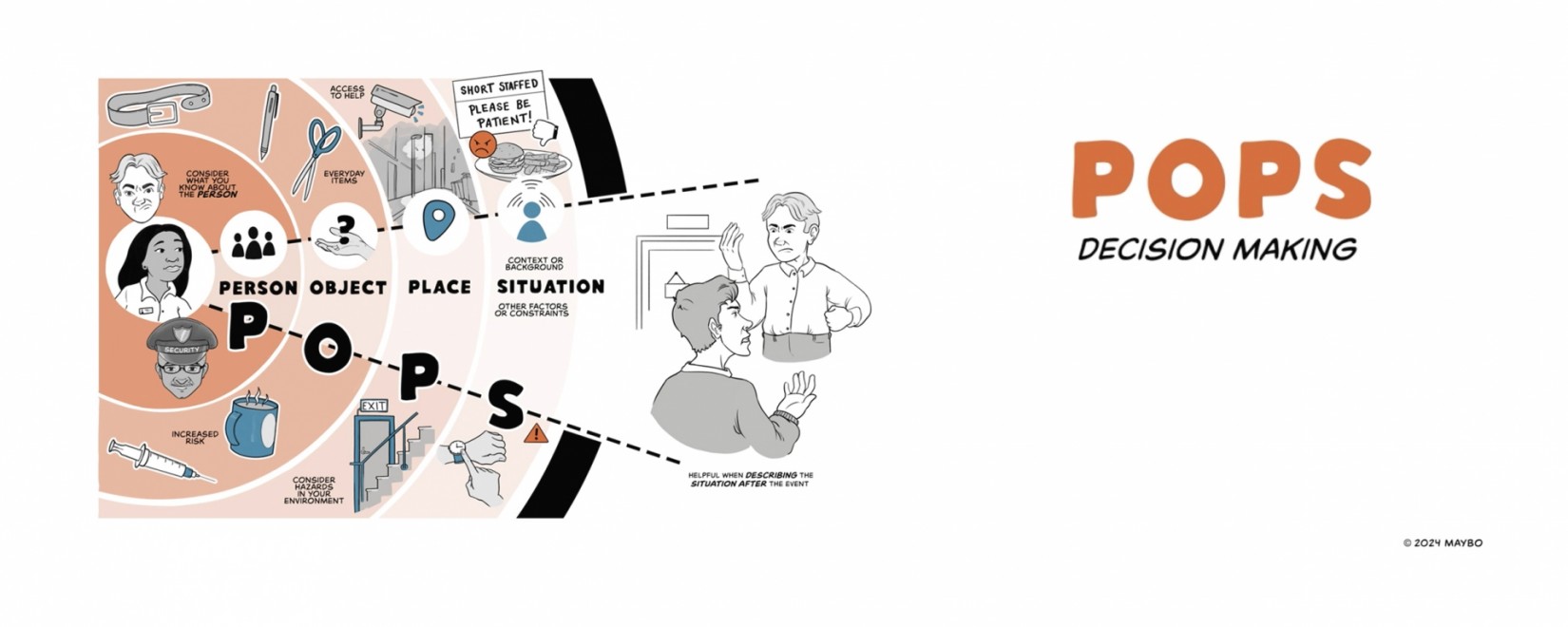Choose another country or region to
see content specific to your location

Maybo’s POPS Model helps us understand what’s happening in a situation. By considering Person, Object, Place and Situation we can identify anything that could pose a risk to us or others and make informed decisions.
This short video explains how to assess a threat using POPS which is part of Maybo’s SAFER Approach to conducting a dynamic risk assessment:
The POPS Model can also be helpful when describing a situation after the event.
To purchase posters of our SAFER, POPS, SEAL™ and Open PALMS™ models, suitable for staff rooms, training rooms and notice boards visit our store.
If you would like to discuss how we can help you please get in touch with one of our experts today